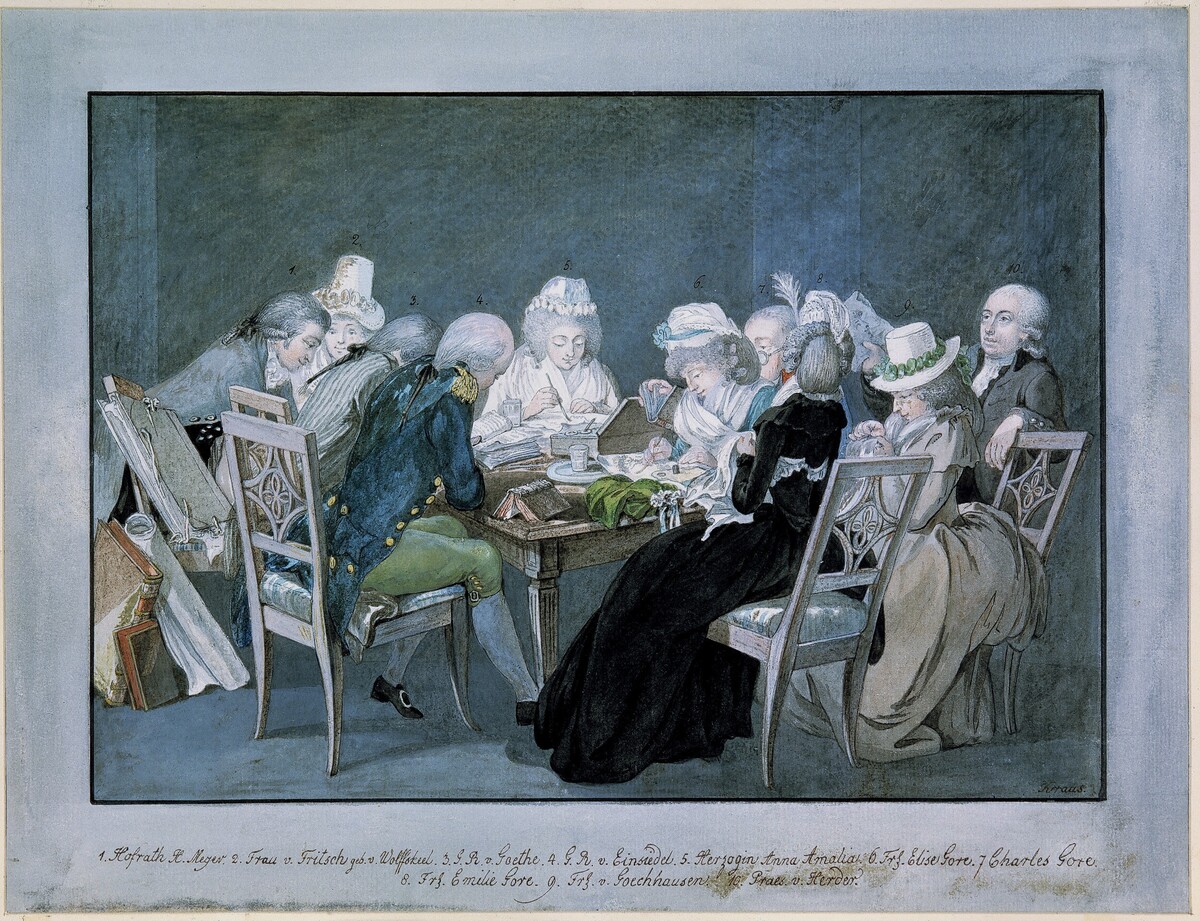Class Status or Gender? Reading and Sociability at the Court of Duchess Anna Amalie of Saxe-Weimar and Eisenach (c. 1795)
Abstract
Women participated actively in Enlightenment discourse. They published journals, for instance, or contributed to them. But as the media market became increasingly organized around commercial objectives, women lost their position. This was because German society began to rely more heavily on gender, as a category, to distinguish between spaces marked as “political/public” vs. “non-political/private,” or as male and female, respectively. In courtly dynastic contexts, on the other hand, class status and proximity to the ruler still remained decisive. If the courtly social life of Duchess Anna Amalia of Saxe-Weimar and Eisenach (1739–1807), depicted here in stylized form, included commoners, then they were men. If women took part, they were invariably of noble origin.
Source

Source: Watercolor (c. 1795) by Georg Melchior Kraus (1737—1806). 1. Privy Councillor Johann Heinrich von Meyer, 2. Lady-in-Waiting Henriette von Fritsch, 3. Privy Councillor Johann Wolfgang von Goethe, 4. Chamberlain Friedrich von Einsiedel, 5. Anna Amalia, 6. Elise Gore, 7. British painter Charles Gore, 8. Emile Gore, 9. Lady-in-Waiting Luise von Göchhausen, 10. General Superintendent and Court Preacher Johann Gottfried von Herder. Image no. 00001935, bpk-bildagentur.
© bpk
Further Reading
Ulrike Weckel, Claudia Opitz, Olivia Hochstrasser, and Brigitte Tolkemitt, eds., Ordnung, Politik und Geselligkeit der Geschlechter im 18. Jahrhundert. Göttingen: Wallstein, 1998.
Julia Frindte, ed., Handlungsspielräume von Frauen um 1800. Heidelberg: Winter, 2005.